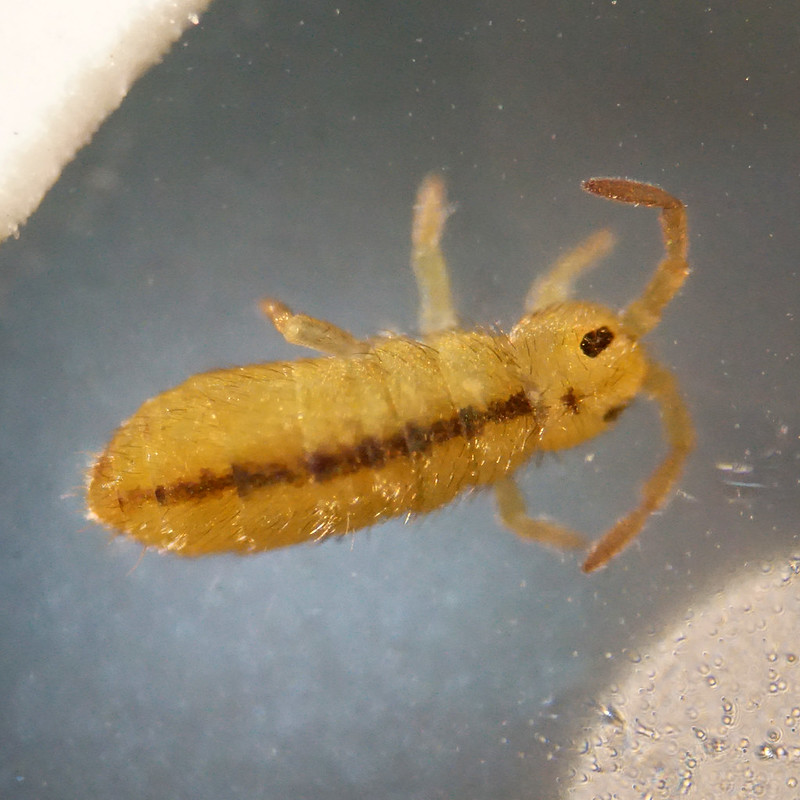We had planned to visit a woodland site I've never been to before, but when we got close it was clear that it simply wasn't safe to proceed - far too wet. Although we had a little rain overnight I couldn't understand why the land was so wet - until several hours later when I figured out that the snow melt of the last month has saturated the ground in the east of the county and the steep clay slopes will take several months to dry out. So it was time for Plan B, which was a short diversion to a Launde Park Wood which has better access. We focussed on a steep east-facing slope covered in a mixture of Beech, Ash and Oak, sampling in the litter, under logs and brushing tree trunks.
The predominant species in the leaf litter was
Tomocerus minor.
Orchesella cincta was by far the most dominant arboreal species with a few
Entomobrya intermedia present, but we also turned up a single
Isotomurus unifasciatus:

The distinction between
Isotomurus palustris and
I. unifasciatus is that
unifasciatus has a continuous dark line down its midline but is otherwise uniformly pale, while
palustris has a slightly discontinuous dorsal line and mottled patterning on the sides of its abdomen.
Nothing terribly exciting, but given that no-one has ever recorded
any springtails at all from this nature reserve, it's a start.

No comments:
Post a Comment
Comments welcome, I will respond as soon as I can.
Note: only a member of this blog may post a comment.